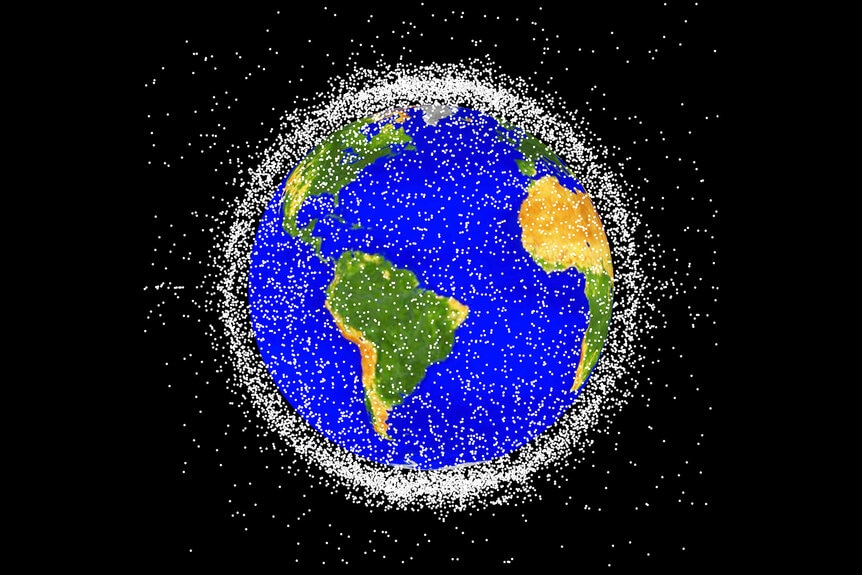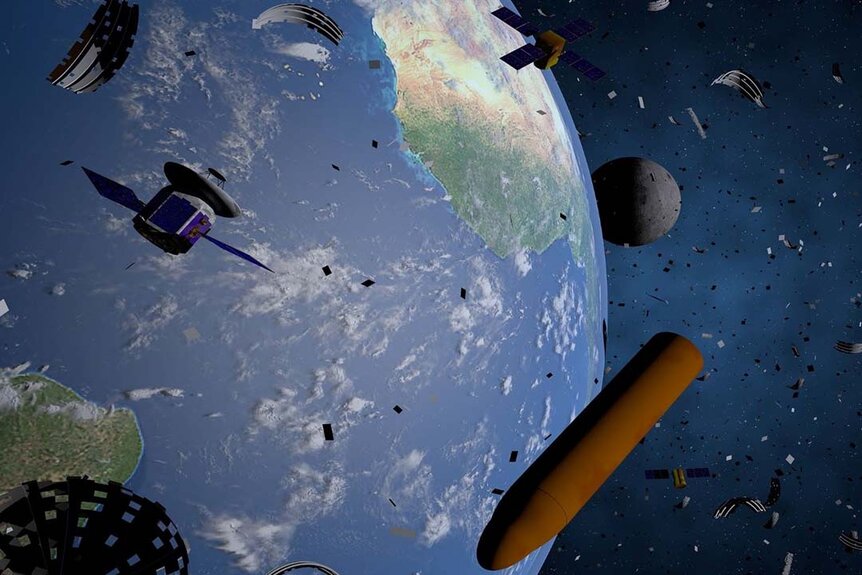Create a free profile to get unlimited access to exclusive videos, sweepstakes, and more!
How Scientists Are Mapping and Attempting to Clean Up Some 100 Million Pieces of Space Debris
There are more than 100 million pieces of space junk orbiting the planet.
The Ark portrays humanity 100 years in the future, as we embark on an interstellar journey to save our species. The crew were meant to spend the entire trip in stasis but were awoken mid-journey when their ship was damaged, and a significant portion of the crew (including most of the mission’s leadership) were killed.
Keeping your spacecraft intact is priority number one on any space mission, and it’s something which is becoming increasingly difficult in near-Earth space. Over the last 60 years or so, we’ve put a few hundred people into space and an endlessly growing number of satellites and other spacecraft. The downshot is that we’ve left a bunch of space debris behind, turning low-Earth orbit into a collection of millions of orbiting bullets.
For More on Space Junk:
Space Junk Scavenger from Airbus Launched to Clean Up Space Waste
Watch the Final Moments of a Dead Satellite As It Tumbles Through the Atmosphere
Private Company TransAstra Wants to Scoop Up Space Junk in Big Trash Bags
Space Debris Map, How Much Space Debris Is Orbiting the Earth?
At present, there are roughly 25,000 pieces of orbital debris larger than about 10 centimeters. Those pieces are large enough to see and track, and they pose the largest threat to astronauts and spacecraft. There are an estimated half a million pieces of space junk between 1 and 10 centimeters, and the total population of space junk is estimated at more than 100 million pieces. In total, there are more than 9,000 metric tons of space junk whipping around our planet, according to NASA.
Some of that debris falls back to Earth every day, alongside other material from space. It’s unclear precisely how much space junk is falling to Earth all the time, but we do know that one piece of large, tracked space debris falls to Earth every day on average. Fortunately for those of us on the ground, most of that junk burns up during reentry and most of the rest falls into the ocean. To date, no injuries or property damage caused by space debris have ever been confirmed.
Space debris has been a problem for a while, but things have gotten worse in recent years. In 2007, China intentionally destroyed their Fengyun-1C weather satellite in orbit. Two years later, the American communications satellite Iridium-33 and Russia’s retired Cosmos-2251 smashed into one another. Those two events increased the amount of large space debris by about 70%.
Millions of dead satellites still coasting on their own steam, rocket parts, debris from explosions or collisions, and tiny flecks of metal or paint orbit the Earth in a thinly spread cloud. Moving at more than 17,000 miles per hour, even small bits of debris pose a considerable threat to passing spacecraft, transforming low-Earth orbit into a real-life game of space Frogger.
To protect astronauts from the threat of space debris, the International Space Station (ISS) is shielded and designed to withstand impacts from debris up to 1 centimeter in diameter. Moreover, the station will occasionally maneuver out of the way of large debris to avoid impact.
How to Clean Up Space Junk, and Stop Making It
Today, the problem of space junk is manageable but it’s only going to get worse with each new launch. NASA and other space organizations are working to develop strategies for cleaning up the mess we’ve made of near-Earth space. NASA’s Detect, Track, and Remediate: the Challenge of Small Space Debris competition is offering a $20,000 grand prize for workable ideas.
Meanwhile, scientists are tackling the problem from another angle, by experimenting with alternative materials to make satellites and spacecraft more environmentally friendly. A recent study revealed there are measurable amounts of aluminum and other materials in Earth’s upper atmosphere which came directly from space junk burning up on reentry. That suggests that the environmental influence of space junk doesn’t end once it deorbits. Simply pushing space junk back toward Earth might only be sweeping the problem under the atmospheric rug.
With that in mind, scientists at Kyoto University are experimenting with wood as a material for future satellites. The process began in the lab, where scientists tested a number of different woods in simulated space conditions. They found no significant signs of damage or mass loss, suggesting that wood might survive just fine in space. Then they sent samples to the ISS and exposed them to space for a year before sending them back to Earth. Those results confirmed what researchers had found in the lab.
Now researchers are building a complete satellite known as LignoSat, which will become the world’s first wooden satellite. LignoSat will carry experiments that study the satellite itself, monitoring how it performs in space over the course of about six months. At the end of its mission, it will deorbit and burn up in the atmosphere like no other satellite has ever burned up before.
The solution to space debris will probably be multipronged, a combination of cleanup efforts and new, safer materials. The lessons learned along the way might not only fix the problem of space debris but also teach us about how to operate in more environmentally friendly ways. Those are precisely the kinds of lessons that will help us care for the planet we have, so we don’t have to jump ship for some other world.
The Ark is currently in stasis but will return soon for Season 2!




































